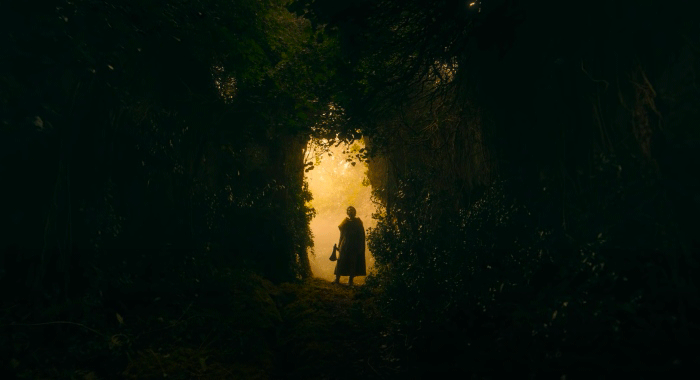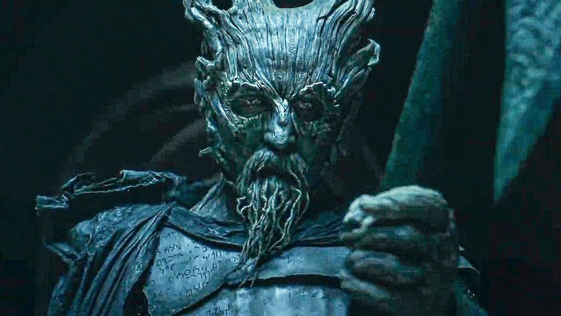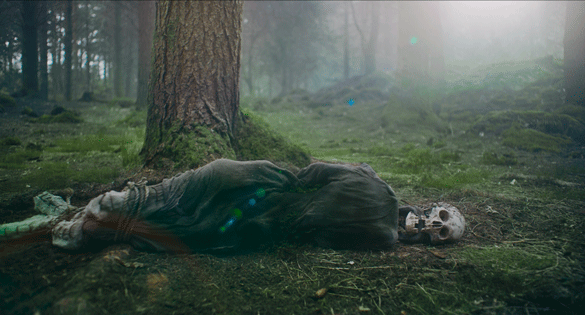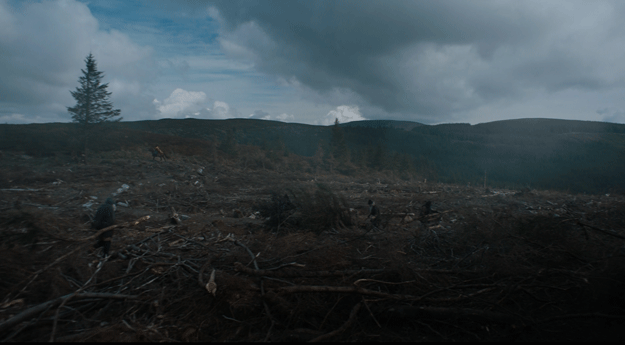The Green Knight by writer and director David Lowery is based on the 14th century chivalric romance Sir Gawain and The Green Knight. The film adaptation subverts and twists the familiar story while paying homage to the source material, and closes as a love letter to the natural world.

The Green Knight implores the viewer to witness the beauty of nature. “Look, see a world that holds more wonders than any since the Earth was born.” This opening line also reminds the viewer that this story is set in the world of King Arthur, and to therefore suspend any disbelief.

When Nature first enters into the story, it does so as the Green Knight, crashing a party with an axe, and a holly bough, in hand. This act is met with hostility, and dozens of knights brandish their swords, before King Arthur tells them to hold off on their judgement.
As modern viewers, a parallel can be drawn to the still-tense reaction of the world when faced with the issue of climate change. The United Nations reported that 2019 was the second warmest year on record and the end of the warmest decade (2010- 2019) ever recorded. The majority believe this threat to be significant, but many are left holding their sword, their fear translating into anger.
Lowery’s artistic vision connects with the United Nations Sustainable Development Goal on Climate Action, especially because it allows people to explore that anger and fear, and to come out of the experience ready to learn more.
The challenge the Green Knight poses in the film is the challenge that humanity faces now. Humanity may injure the Earth through pollution, overpopulation and deforestation, but this is only ensuring our own destruction.
After all, the Earth, like the Green Knight, can heal from most anything if left undisturbed for long enough. Humans, on the other hand, are far more fragile.

Lowery was cognizant of the environmental themes as he worked, as he says in an interview with Eric Kohn. “As someone who has a very ecological mindset and wants to bring those into my work, I felt that I should lean into that interpretation as hard as I could.”
Lowery’s film also pertains to the United Nations Sustainable Development Goal on Life on Land. Nature, and its absence, are inextricably linked to this story.
Gawain starts his journey by riding past a devastated landscape of trees. Human activity has altered almost 75 percent of the earth’s surface, squeezing wildlife and nature into an ever-smaller corner of the planet.

The forest has a powerful presence in the film, so much so that it becomes a character in itself. It is ever in the background, shifting and shaping the other characters’ decisions. The lush curtain of greenery presupposes privacy, and certain vulnerable moments in the film are only possible because of its enclosure.
This film forces the viewer to confront their decisions, no matter the consequences. Viewers will take a closer look at their own carbon footprint, and that of large conglomerates. The Green Knight allows humanity to better understand how to heal, and how to take action.
To see more of David Lowery’s work, click here.
To learn more about the United Nations Sustainable Development Goals, including how to take action on the issues mentioned in this article, click here.
